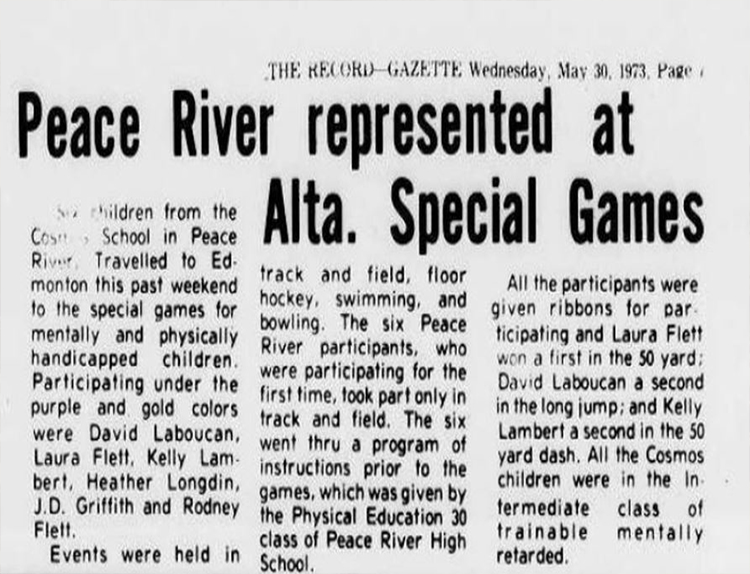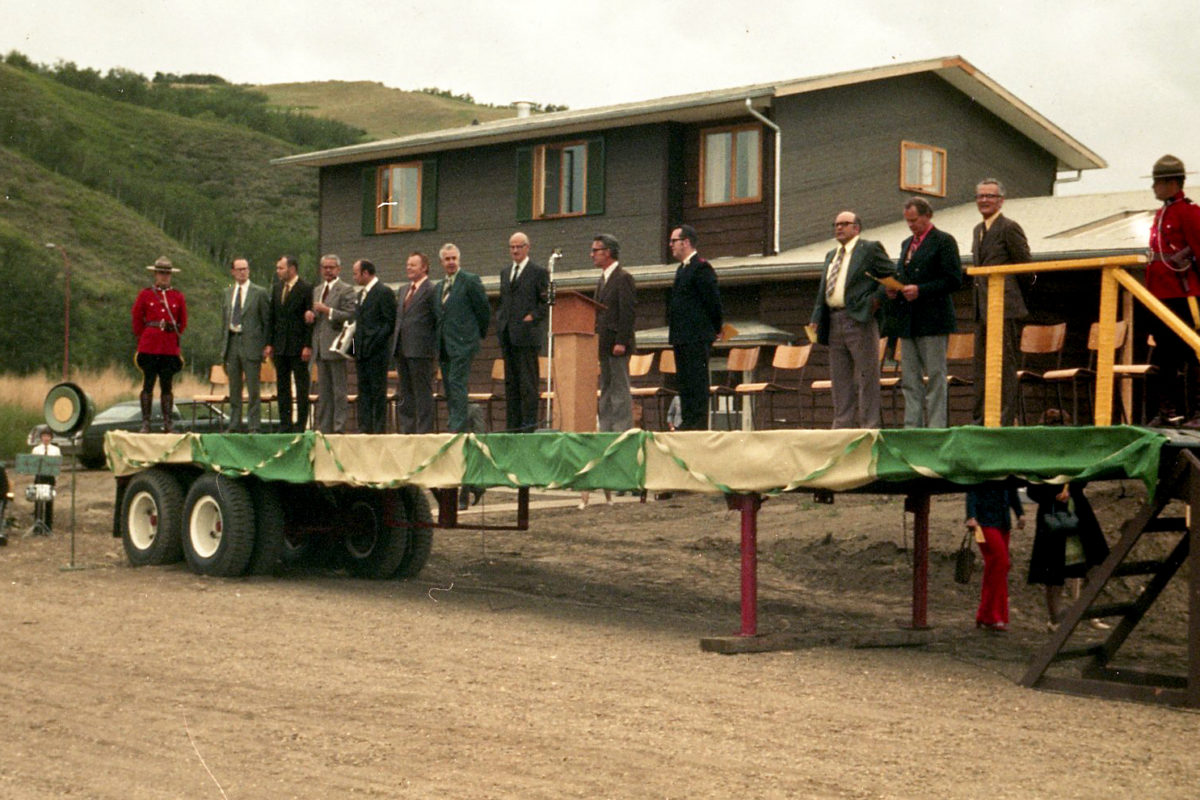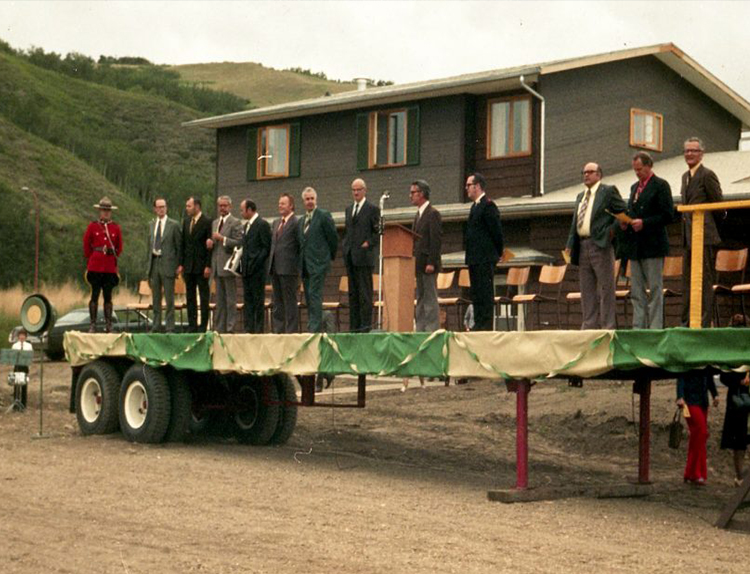In 1970, the Peace River and District Association for the Mentally Retarded recognized the need for residential care in order to accommodate out-of-town students attending Cosmos School.
The process of designing and constructing got underway immediately and in 1971 both dormitory and school became operational. Sunshine House was funded by the Alberta Housing Corporation while operated by the PRAMR and was able to house no more than 14 students as well as two housekeepers and dorm parents.
Through the Peace River Record Gazette in 1971, a dormitory naming contest was created.
The winning submission came from Dr. John O’Gorman, the Director of the Peace River Health Unit. There were 25 name suggestions submitted to the newspaper according to the article published December 8, 1971.
The official Sunshine House Grand Opening was held June 17, 1972, at 11:00 a.m. and was attended by:
– The Honorable Grant MacEwan, Lieutenant-Governor of Alberta
– Captain Max Bulmer, President of the Peace River and District Association for the Mentally Retarded
– Randy McKinnon, Alberta Department of Education
– Bob Orysiuk, President of Alberta Housing Corporation
– Major John Whalley, Government of Alberta Chief of Protocol
– John Friesen, Mayor of Peace River
– Ernie Marshall, President of the Peace River Chamber of Commerce
– Rev. Bob McLaren, Pastor of Baptist Church
– Al Adair, Peace River MLA (former PRDAMR President)
It was at this time the Lieutenant Governor unveiled a plaque and planted a spruce tree called ‘Sunshine Tree’. It was planted in front of the house and we believe it still stands today.
The grand opening also served as an opportunity to recognize the organization’s perseverance and dedication as well as a ‘thank you’ to the community for the support received. Much, if not all, of Sunshine House’s furnishings, including bedrooms, were donated by local businesses and community members.
Once operation of Cosmos School was turned over to the Peace River School district in 1973, Sunshine House became a full-time group home. This change forced the organization to rethink its mandate.
In 1979, the organization added ‘physical disabilities’ to its mandate and officially became the Peace River and District Association for People with Special Needs in November of that year.
In 1983 it was decided that Sunshine House would be reclassified as an ‘Adult Special Care Facility’ to reduce the stigma associated with the term ‘Group Home’.
May 1987 saw Sunshine House close as a residence and open as the organization’s main office building for a short time.
While no longer called Sunshine House, the building is home for some Individuals ASLS supports in Peace River.








